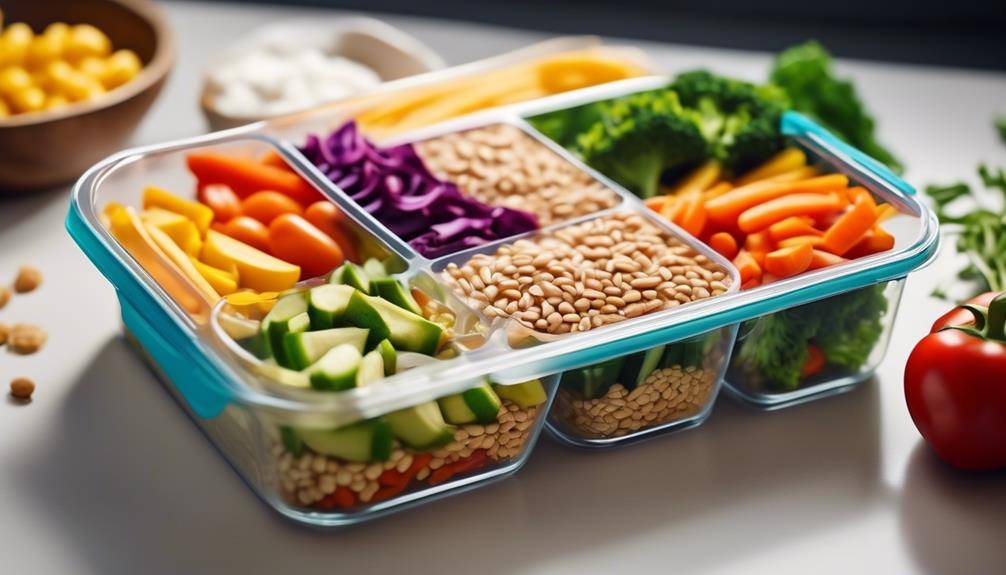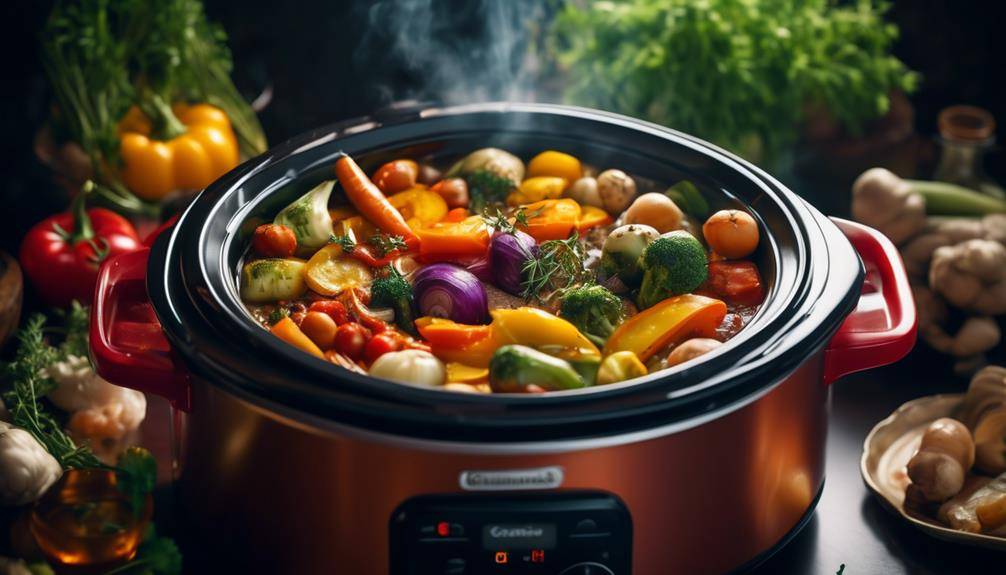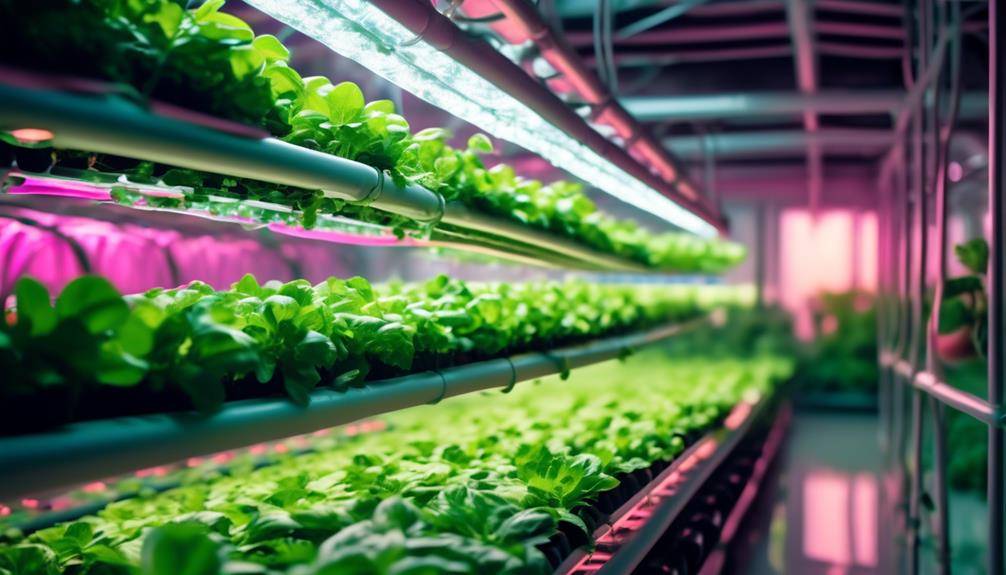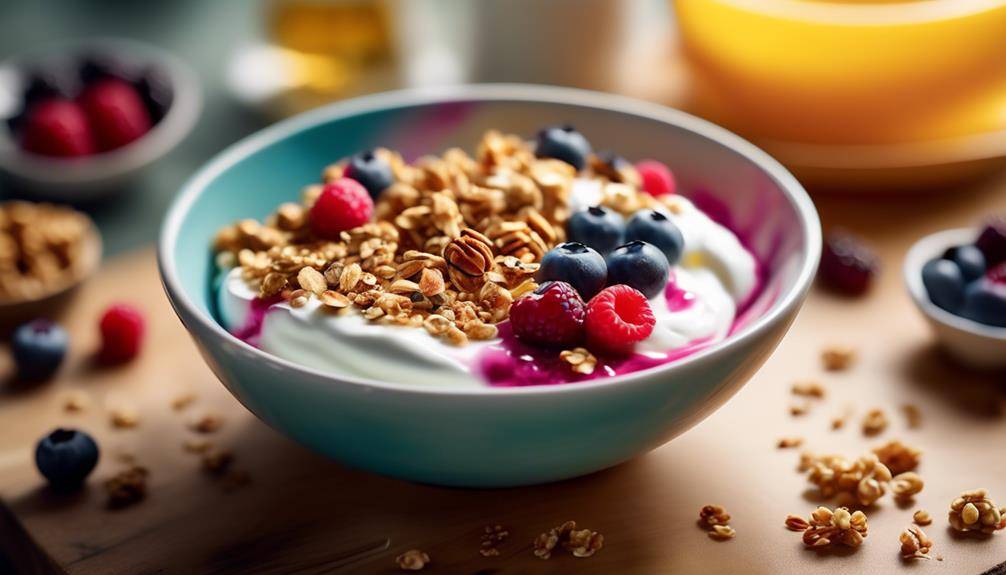How To: Calorie Counted Meal Prep for Weight Loss

Are you tired of trying every fad diet that promises quick weight loss but leaves you feeling unsatisfied and hungry? Well, it’s time to ditch those outdated methods and embrace a more modern and effective approach to achieving your weight loss goals. Introducing Calorie Counted Meal Prep for Weight Loss, a simple yet powerful strategy that allows you to take control of your nutrition and shed those unwanted pounds. But how does it work? And why is it worth your time? Stay tuned as we dive into the benefits, planning, preparation, and tracking involved in this game-changing method. Get ready to discover a new way of fueling your body and transforming your health.
Benefits of Calorie Counted Meal Prep
By calorie counting and prepping your meals, you can enjoy the benefits of a well-planned and structured approach to weight loss. Meal prep benefits and weight loss advantages go hand in hand when it comes to achieving your health goals.
One of the major benefits of calorie counted meal prep is portion control. When you prepare your meals in advance, you have the opportunity to measure and portion out your food accurately. This helps you avoid overeating and ensures that you are consuming the right amount of calories for your weight loss goals. By having portioned meals readily available, you can easily stick to your calorie targets and maintain a balanced diet.
Another advantage of meal prep is that it saves you time and effort. By dedicating a specific time to plan and prepare your meals for the week, you eliminate the need to make impulsive food choices or rely on takeout options. This not only saves you money but also allows you to have complete control over the ingredients and cooking methods used in your meals. With prepped meals, you can avoid the temptation of unhealthy snacks or fast food, making it easier to stay on track with your weight loss journey.
Additionally, meal prep promotes healthier eating habits. When you have pre-portioned meals available, you are less likely to reach for unhealthy snacks or indulge in high-calorie meals. Instead, you can focus on consuming nutrient-dense foods that support weight loss and overall health. Meal prep also allows you to incorporate a variety of fruits, vegetables, lean proteins, and whole grains into your diet, ensuring that you are getting all the necessary nutrients.
Setting Your Weight Loss Goals
When it comes to setting your weight loss goals, there are a few key strategies you should consider. First, it’s important to set realistic and achievable goals that are specific to your needs and abilities. Second, tracking your progress regularly can help you stay accountable and make necessary adjustments to your meal prep and exercise routine. Lastly, maintaining motivation throughout your weight loss journey can be challenging, but finding ways to stay inspired and focused will greatly increase your chances of success.
Goal Setting Strategies
To effectively set your weight loss goals, focus on specific and measurable objectives that align with your desired outcome. Setting goals not only provides you with a clear direction but also helps you stay motivated and accountable throughout your weight loss journey. Here are some strategies for achieving your goals:
- Break it down: Divide your overall weight loss goal into smaller, manageable milestones. This will make your journey seem less overwhelming and more achievable.
- Be realistic: Set goals that are attainable and realistic for your body type and lifestyle. Unrealistic goals can lead to frustration and disappointment.
- Track your progress: Keep a record of your progress to stay motivated and celebrate your achievements along the way.
Tracking Progress Effectively
One effective way to track your progress and set weight loss goals is by regularly measuring key indicators of your journey. Tracking methods can help you stay accountable and motivated, while also providing valuable insights into your success. Start by weighing yourself regularly, preferably once a week, to monitor changes in your body weight. Additionally, measuring your body measurements, such as waist circumference or body fat percentage, can give you a more accurate representation of your progress. Another useful tracking method is keeping a food diary, where you record everything you eat and drink. This can help you identify patterns, make adjustments, and ensure you are sticking to your calorie goals. Remember, measuring success shouldn’t be limited to just the scale; it’s important to consider other indicators that reflect your overall health and well-being.
Maintaining Motivation Throughout
Setting achievable weight loss goals is crucial for maintaining motivation throughout your journey. Without clear goals, it can be easy to lose focus and become discouraged. To keep your motivation high, consider the following strategies:
- Celebrate small victories: Recognize and celebrate every small milestone you achieve on your weight loss journey. This will boost your confidence and keep you motivated to continue.
- Find a support system: Surround yourself with supportive friends, family members, or even a weight loss support group. Having people who understand and encourage you can make a big difference in staying motivated.
- Visualize your success: Take a moment each day to visualize yourself reaching your weight loss goals. Imagine how you will feel, look, and the positive impact it will have on your life. This can be a powerful motivator to keep going.
Planning Your Meals for Success
Now that you have set your weight loss goals, it’s time to plan your meals for success. Meal planning is essential for staying on track and making healthy choices. By prepping your meals in advance, you can ensure that you have nutritious options readily available and avoid making impulsive food choices. Additionally, practicing portion control is key to managing your calorie intake and achieving your weight loss goals.
Meal Planning Essentials
To ensure success in planning your meals for weight loss, it is crucial to prioritize organization and mindful decision-making. By implementing effective meal planning essentials, you can save time and stay on track with your weight loss goals. Here are some key strategies to consider:
- Utilize meal prep ideas: Preparing meals in advance can save you time and ensure that you have healthy options readily available. Consider batch cooking, portioning meals, and using a variety of ingredients to keep your meals interesting.
- Employ time-saving techniques: Look for ways to streamline your meal prep process. This could include using kitchen appliances like slow cookers or instant pots, pre-cutting vegetables, and planning meals that require minimal cooking time.
- Embrace variety and flexibility: Incorporating a diverse range of foods into your meal plan can help prevent boredom and ensure you’re getting all the essential nutrients. Additionally, allowing for flexibility in your meal plan can help you adapt to unexpected situations and cravings.
Tips for Portion Control
Looking to control your portions and plan your meals for success? Here are some practical tips to help you achieve your weight loss goals. Portion control plays a vital role in managing your calorie intake and maintaining a healthy weight. To start, use smaller plates and bowls to visually trick your mind into thinking you have a full plate. Fill half of your plate with non-starchy vegetables, a quarter with lean protein, and the remaining quarter with whole grains or starchy vegetables. Another useful tip is to pre-portion your meals and snacks into individual containers. This way, you’ll have ready-to-eat, portion-controlled options readily available. Additionally, practicing mindful eating by savoring each bite, eating slowly, and paying attention to your body’s hunger and fullness cues can further aid in portion control. By implementing these tips and adopting healthy portion sizes, you can successfully manage your weight and achieve your weight loss goals.
Grocery Shopping for Nutritious Ingredients
When shopping for nutritious ingredients, prioritize fresh produce, lean proteins, and whole grains to support your weight loss goals. By selecting these items, you can create a variety of healthy recipe ideas while staying within your budget. Here are some tips to help you make the most of your grocery shopping experience:
- Look for seasonal fruits and vegetables: Seasonal produce is not only fresher and tastier, but it’s also more affordable. Plus, it adds variety to your meals and ensures you’re getting a wide range of nutrients.
- Choose lean sources of protein: Opt for lean cuts of meat like chicken breast, turkey, or fish. If you’re on a budget, you can also consider plant-based proteins such as beans, lentils, or tofu. These options are not only healthier but also cost-effective.
- Opt for whole grains: Instead of refined grains, choose whole grains like brown rice, quinoa, or whole wheat bread. Whole grains are higher in fiber and nutrients, keeping you fuller for longer and supporting your weight loss efforts.
Preparing and Portioning Your Meals
Start by planning your meals and portioning them out to ensure you stay on track with your weight loss goals. Meal prepping can offer numerous benefits for weight loss, such as saving time, reducing the temptation of unhealthy choices, and providing portion control. Here are some tips for successful meal prepping.
First, choose a day of the week when you have some free time to dedicate to meal prepping. This could be a Sunday afternoon or any other day that works for you. Plan your meals for the week ahead and make a grocery list based on the ingredients you need. By having a clear plan and a shopping list, you can avoid impulse purchases and stick to healthier options.
When it comes to portioning your meals, invest in some good quality meal prep containers. These containers will not only help you to portion out your meals, but they will also keep them fresh and easily accessible. Before portioning out your meals, consider the recommended serving sizes for each food group. This will help you maintain a balanced diet and control your calorie intake.
To make meal prepping more enjoyable, try experimenting with different recipes and flavors. Use a variety of herbs, spices, and healthy sauces to add flavor to your meals without adding unnecessary calories. Consider batch cooking certain ingredients, such as grains, proteins, and roasted vegetables, to save even more time during the week.
Storing and Freezing Your Meal Prep
To ensure your meal prepping efforts are successful, it’s important to know how to properly store and freeze your prepared meals. Storing and freezing your meal prep not only helps to extend its shelf life but also ensures that you have healthy and convenient meals ready to go whenever you need them. Here are some storing techniques and meal prep container options to consider:
- Use airtight containers: Invest in high-quality, airtight containers that will keep your meals fresh and prevent any leakage. Look for containers that are microwave-safe and freezer-safe for added convenience.
- Portion and label your meals: Divide your prepared meals into individual portions before storing them. This will make it easier to grab a meal and go, without the need to defrost the entire batch. Label each container with the name of the meal and the date it was prepared to ensure freshness and avoid any confusion.
- Freezing tips: If you plan on freezing your meal prep for an extended period, consider using freezer-friendly bags or containers. Remove as much air as possible from the bags to prevent freezer burn. When you’re ready to eat, simply thaw your meal in the refrigerator overnight or use the defrost function on your microwave.
Properly storing and freezing your meal prep is essential for maintaining its quality and ensuring that you have healthy meals readily available. By investing in the right meal prep containers and following these storing techniques, you can make the most out of your prepped meals and stay on track with your weight loss goals.
Tracking Your Progress and Making Adjustments
Keeping track of your progress and making necessary adjustments is crucial for achieving your weight loss goals through meal prepping. By monitoring your progress, you can identify what is working and what needs to be modified in order to optimize your results. There are various tracking methods and adjusting strategies that can help you stay on track and make the necessary changes to continue progressing towards your weight loss goals.
One effective tracking method is keeping a food diary. This involves recording everything you eat and drink, along with the portion sizes and calorie counts. This can help you become more aware of your eating habits and identify any areas where you may be consuming excess calories. Additionally, tracking your progress through regular weigh-ins and measurements can provide valuable feedback on your progress and help you stay motivated.
Another important aspect of tracking your progress is monitoring your energy levels and how you feel throughout the day. Pay attention to any changes in your energy levels, mood, and overall well-being. This can help you identify if any adjustments need to be made to your meal plan, such as increasing your protein intake or adjusting your carbohydrate portions.
Once you have gathered data from your tracking methods, it’s time to make adjustments to your meal prepping strategy. If you find that you are not losing weight at the desired rate, you may need to adjust your calorie intake by either reducing portion sizes or incorporating more low-calorie, nutrient-dense foods into your meals. Additionally, if you are feeling hungry or unsatisfied, you may need to increase the protein or fiber content of your meals to help keep you fuller for longer.
Calorie Counted Meal Prep for Weight Loss; Frequently Asked Questions
How Do I Calculate the Number of Calories I Should Consume for Weight Loss?
To calculate your optimal calorie intake for weight loss, start by determining your daily energy expenditure. Then, create a calorie deficit by consuming fewer calories than you burn. Remember to also consider the role of macronutrients in your diet for effective weight loss.
Can I Still Eat My Favorite Foods While Doing Calorie Counted Meal Prep?
Yes, you can still enjoy your favorite foods while doing calorie counted meal prep! Look for healthier alternatives and find a balance between indulgence and weight loss. It’s all about making informed choices and portion control.
How Long Can I Store My Meal Prepped Meals in the Refrigerator?
To ensure the freshness and safety of your meal prepped meals, it’s recommended to store them in the refrigerator for no more than 3-4 days. Using airtight containers like glass or BPA-free plastic is best for meal prep storage.
Is It Necessary to Track My Progress When Doing Calorie Counted Meal Prep?
It is necessary to track your progress when doing calorie counted meal prep. Portion control is important for weight loss, and exercise plays a role in achieving your goals. Stay on track and see the results!
What Are Some Common Mistakes to Avoid When Planning and Preparing Calorie Counted Meals for Weight Loss?
When planning and preparing calorie counted meals for weight loss, there are common mistakes to avoid. Follow these meal prep tips to ensure success: portion control, avoiding processed foods, incorporating variety, and staying consistent.
Conclusion
In conclusion, calorie counted meal prep is a practical and effective approach for weight loss. By setting your goals, planning your meals, and grocery shopping for nutritious ingredients, you can ensure that you are eating balanced and portion-controlled meals. Preparing and portioning your meals in advance saves time and helps you stay on track. Storing and freezing your meal prep allows for easy access to healthy options throughout the week. By tracking your progress and making necessary adjustments, you can achieve your weight loss goals.








